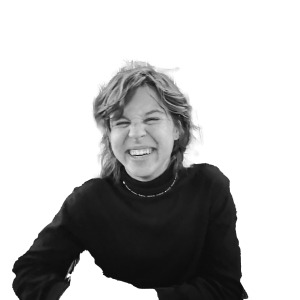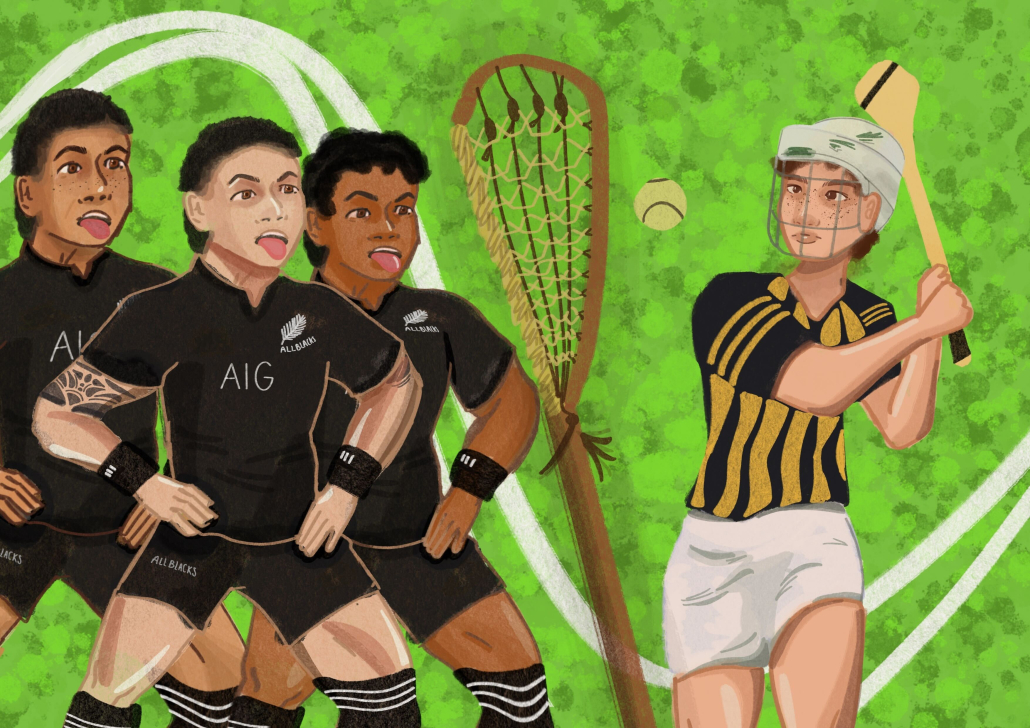EVERY 40 DAYS
Athletics are helping rejuvenate endangered languages
From Gaelic football to lacrosse, sports are a great tool for language preservation.
From Gaelic football to lacrosse, sports are a great tool for language preservation.


The first time I ever encountered an endangered language was at the 2014 Aotearoa New Zealand All Blacks game against the United States Eagles. My mom, a former college rugby player, had heard the All Blacks were going to be playing at Soldier Field in Chicago and thought it would be a great way to introduce my brother and I to the sport.
We got up early that morning, drove into the city and found our seats. We had arrived early to the game to guarantee that we would see one of the most storied traditions in sports — the Haka.
The Haka, a traditional Māori dance, is an epic display of Māori culture and language that the All Blacks perform before their matches. The All Blacks perform two different Hakas, the “Ka mate” and the “Kapa O Pango.”
Ka mate, composed by Ngati Toa Chieftain Te Rauparaha around 1820, is the Haka that was performed by the original All Black team in 1905 and has been performed by the team ever since. Kapa O Pango was composed by Derek Lardelli specifically for the team and was first performed by the All Blacks in August 2005.
Both Ka mate and Kapa O Pango are performed entirely in te reo Māori or the Māori language. Beyond the Haka, Black Ferns player Ruby Tui led the crowd in “Tutira Mai Ngā Iwi,” a classic te reo Māori song after her team won the 2022 women’s Rugby World Cup.
There are countless more examples of Māori players taking pride and championing their language as Rugby continues to foster a language-forward environment for Aotearoa players. The pride that the All Blacks take in their culture and language encourages the younger generation that looks up to them to get involved in learning te reo Māori and Māori culture, hopefully preserving the language for another generation.
Halfway across the globe in Ireland, an entirely different athletic league is fostering language development. The Gaelic Athletic Association, founded in 1884, was instrumental in preserving traditional Irish sports such as Gaelic football and Hurling, as well as preserving the Irish language and culture.
The GAA was formed in response to centuries of British suppression of traditional Irish sports, such as Hurling and Gaelic football, and was instrumental in reviving them into the staple sports they are today.
I witnessed my first Gaelic football match in the spring of 2022, and while I did not understand all of the rules, it is an experience I will never forget. It was such an intense and unique sport that it really pulled me into the world of GAA sports.
GAA sports promote language and culture through a multitude of avenues, such as casual language use within the sports. Hurling casually utilizes Gaeilge as it calls the ball used a “sliotar,” which is an Irish word.
The GAA also promotes the Irish language through Gaelige announcers during Hurling and Gaelic football matches, allowing for Gaeilgeoirí to enjoy the game in their native tongue. The GAA has also taken to having an Irish language ambassador every year that helps promote the Irish language to the younger generation.
Back in the United States, there is another more inconspicuous game that is helping Native Americans connect with their language and culture — lacrosse. Lacrosse was invented by the Haudenosaunee people and from there, evolved into the sport we see today.
The Haudenosaunee Nationals, the national team of the Haudenosaunee people, play internationally and compete in the biggest lacrosse tournaments. The sport helps encourage cultural participation and turn participation in Native American languages.
One program doing a great job encouraging indigenous language and culture is the Myaamia Center at Miami University in Ohio. This program has helped revitalize the Myaamia language by combining language classes with cultural classes, effectively helping provide resources to Myaamia students. One of the cultural classes that the center offers is a lacrosse class, once again allowing students to connect to their language and culture through a sport.
Sports are an intangible part of many cultures and continue to be a driving force in language and cultural revitalization among oppressed groups. If you are a sports person like me, getting involved in a language-forward sport by either playing or watching can help you build community and learn your endangered language.
Peyton Dacy is a junior writing about the importance of language revitalization as an indigenous language dies out every 40 days. Dacy’s column, “Every 40 days,” runs every other Tuesday. Dacy is also the Diversity, Equity and Inclusion Director at the Daily Trojan.
We are the only independent newspaper here at USC, run at every level by students. That means we aren’t tied down by any other interests but those of readers like you: the students, faculty, staff and South Central residents that together make up the USC community.
Independence is a double-edged sword: We have a unique lens into the University’s actions and policies, and can hold powerful figures accountable when others cannot. But that also means our budget is severely limited. We’re already spread thin as we compensate the writers, photographers, artists, designers and editors whose incredible work you see in our daily paper; as we work to revamp and expand our digital presence, we now have additional staff making podcasts, videos, webpages, our first ever magazine and social media content, who are at risk of being unable to receive the support they deserve.
We are therefore indebted to readers like you, who, by supporting us, help keep our paper daily (we are the only remaining college paper on the West Coast that prints every single weekday), independent, free and widely accessible.
Please consider supporting us. Even $1 goes a long way in supporting our work; if you are able, you can also support us with monthly, or even annual, donations. Thank you.
This site uses cookies. By continuing to browse the site, you are agreeing to our use of cookies.
Accept settingsDo Not AcceptWe may request cookies to be set on your device. We use cookies to let us know when you visit our websites, how you interact with us, to enrich your user experience, and to customize your relationship with our website.
Click on the different category headings to find out more. You can also change some of your preferences. Note that blocking some types of cookies may impact your experience on our websites and the services we are able to offer.
These cookies are strictly necessary to provide you with services available through our website and to use some of its features.
Because these cookies are strictly necessary to deliver the website, refusing them will have impact how our site functions. You always can block or delete cookies by changing your browser settings and force blocking all cookies on this website. But this will always prompt you to accept/refuse cookies when revisiting our site.
We fully respect if you want to refuse cookies but to avoid asking you again and again kindly allow us to store a cookie for that. You are free to opt out any time or opt in for other cookies to get a better experience. If you refuse cookies we will remove all set cookies in our domain.
We provide you with a list of stored cookies on your computer in our domain so you can check what we stored. Due to security reasons we are not able to show or modify cookies from other domains. You can check these in your browser security settings.
These cookies collect information that is used either in aggregate form to help us understand how our website is being used or how effective our marketing campaigns are, or to help us customize our website and application for you in order to enhance your experience.
If you do not want that we track your visit to our site you can disable tracking in your browser here:
We also use different external services like Google Webfonts, Google Maps, and external Video providers. Since these providers may collect personal data like your IP address we allow you to block them here. Please be aware that this might heavily reduce the functionality and appearance of our site. Changes will take effect once you reload the page.
Google Webfont Settings:
Google Map Settings:
Google reCaptcha Settings:
Vimeo and Youtube video embeds:
The following cookies are also needed - You can choose if you want to allow them:
